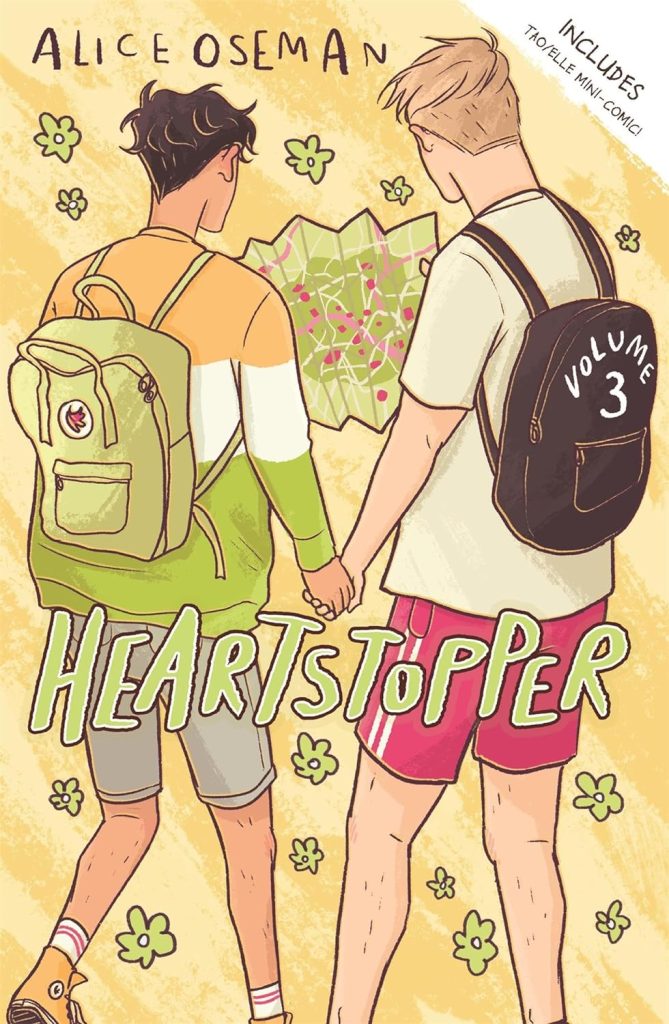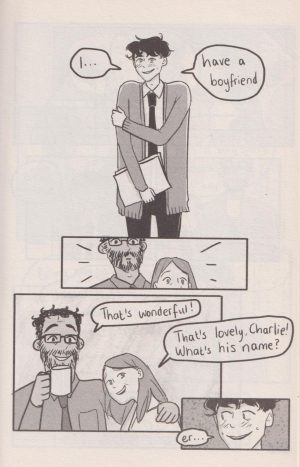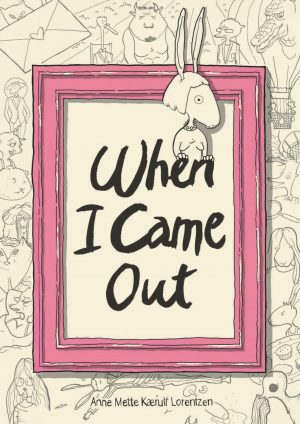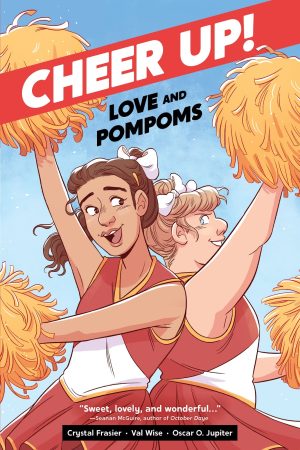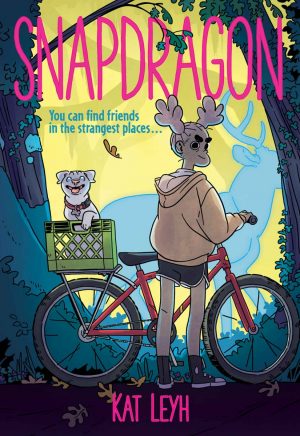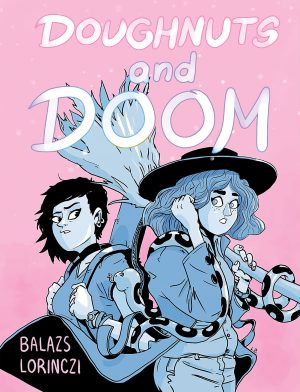Review by Frank Plowright
Heartstopper details the relationship of Charlie Spring, who’s always known he’s gay, and Nick Nelson, who’s only recently discovered he’s bisexual. As was the case with Volume 2, the page numbering continues to be consecutive, so the story content begins with page 560, and Charlie telling his parents he’s found a boyfriend.
A couple of other issues hanging over from last time are rapidly resolved, but while Charlie has been fully out to the school for over a year, other characters, including Nick, are still wrestling about who should know about their orientation. Alice Oseman is skilled at throwing spanners into the works of problems that seem on the verge of being resolved, and making them something that naturally flows into the story. This comes up when Charlie’s school prepares for a trip to Paris with the local girls’ school, during which suspicions about how Charlie came to be outed a year previously are also aired. That leads to the introduction of another school-age difficulty, the curse of mental problems, which will have a greater prominence in Volume 4.
By having two totally sympathetic characters in a young adult graphic novel, it’s hoped that a few youngsters who’d otherwise fall in with the crowd might consider just why so many ignorant minds consider same sex relationships as something to be ridiculed. Homophobia was raised in Volume 2, but recurs in a far more personal and hurtful manner.
Regarding the cast already introduced, Oseman has dutifully ensured we think we know people, but just as in real life not everything about someone is revealed at once, and clearing up one crisis honestly can just lead to another. It’s all very naturally written.
As before, the art is kept simple and the backgrounds minimal, although much of the story taking place in Paris means the occasional pose by a familiar location. Again, the strength of the drawing is being able to show what people are feeling even when it’s not what they’re saying. This is apparent in several scenes.
There are times when Oseman’s script veers away from what’s otherwise as close to reality as she can make it, and that’s usually with regard to responsibility. She ensures any romantic contact has a cut-off point, and it seems as if she’s also staying clear of the actions leading to consequences method of dealing with alcohol. That isn’t the case, but it’s the least convincing sequence here. It’s as if there’s a compulsion to ensure ideal role models in every respect.
As ever, much background information is supplied in the post-story pages, along with a brief comic about Tao and Elle. It’s sweet.
